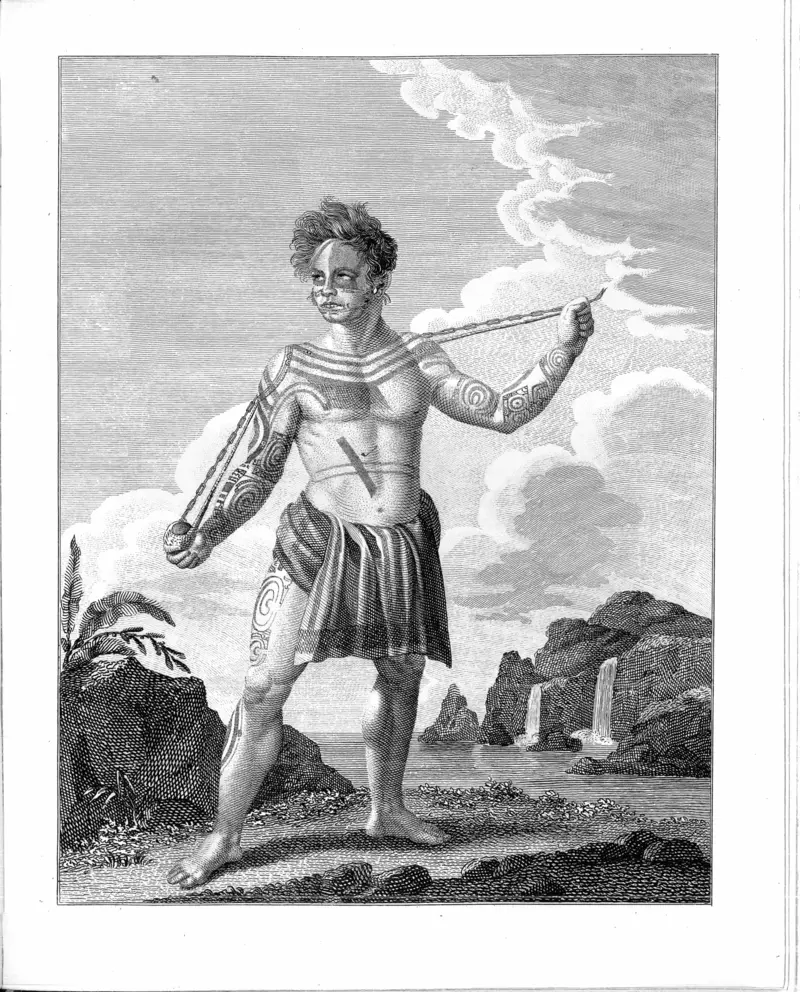[Translate to English:] text 1
Parridero, born on the Polynesian Society Islands and known by the name "Omai" (1751-1780), which was later given to him, made it to Great Britain in 1774 together with the English sea captain James Cook (1728-1779). Here he frequented in the elite English circles as a Polynesian prince and was even presented to King George III. Because of his popularity, he was portrayed numerous times – like that by Francesco Bartolozzi in the exhibition. Dressed in a silk vest and velvet garments, he appears here as a member of the aristocratic class or as a Roman general. In addition to this projection as a “noble savage,” he aroused interest among English society because of his hand tattoos. What previously was described as punctures, painting or engravings was described by Omai with the word “tatau,” which thereby summed up the various phenomena in one word. In 1777, James Cook brought Omai back to the Society Islands – a fate that the predecessors of Omai, who were taken to Europe to be presented, often could not share.

